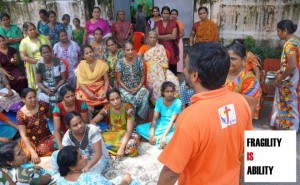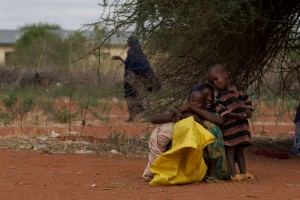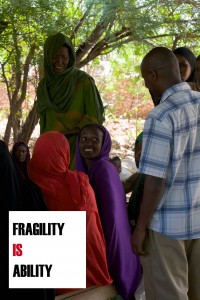The Third International Day for the Victims of Disasters
13 October 2014
FOR COMMUNITIES STRUCK BY DISASTERS
DISCOVERING THE GIFT OF, AND THE CAPACITY FOR, RESILIENCE
 We are in the third year of the proposal that the Camillian Task Force has made to the whole of that Great Family which sees itself gathered around the gift of St. Camillus. The initiative has been spreading slowly but surely, in particular starting with those places where the Camillian Task Force is at work. Each individual action that we engage in to respond to the disasters which over the last year have afflicted the Philippines, India and Kenya continue to pose questions to us about the meaning and the mission of the great Camillian family today.
We are in the third year of the proposal that the Camillian Task Force has made to the whole of that Great Family which sees itself gathered around the gift of St. Camillus. The initiative has been spreading slowly but surely, in particular starting with those places where the Camillian Task Force is at work. Each individual action that we engage in to respond to the disasters which over the last year have afflicted the Philippines, India and Kenya continue to pose questions to us about the meaning and the mission of the great Camillian family today.
During an Angelus of last February Pope Francis reminded us that ‘nature challenges us to be supportive and attentive to the stewardship of the creation, in order to prevent, as well, as far as this is possible, the gravest consequences’. In particular, this year we want people to reflect upon a phrase that Pope Francis has repeated in various contexts: ‘Do not be afraid of frailty’.
For communities that have been struck by disasters, not being afraid of frailty can mean discovering the gift of, and the capacity for, resilience, despite what has happened (earthquakes, typhoons…).
The impact of a natural disaster in the life of a civic social community is expressed in a kaleidoscope of situations which – only when the highest critical moment has passed – begin to be perceived in all their dramatic size: the death of a loved one, the sudden loss of things which express the emotions and the history of an entire existence and which put to a severe test the psychological balance of a person and the stability of an entire civic community: strong emotions, a sense of being lost, of profound disquiet and uncertainty take over and a person in his individual and collective identity can feel that he is a ‘dismantled puzzle’.
It is difficult to read the event, to put it in its right perspective, everything seems clouded, time passes according to mood and things acquire a different feel. Some people soon adapt themselves, others require a more laborious and difficult process: but where does this different capacity to resist powerful ‘blows’, which are emotionally and rationally inexplicable, come from? Or to put it in a better way: why are some individuals more or less resilient than others?
Photographs taken in Kenya by the Camillian Task Force
Resilience: a term that comes from the science of materials and refers to the property that certain materials have of conserving their own structure or reacquiring their original form after being crushed or deformed.
Applied to the situations of people, it specifically evokes the capacity of people to deal with stressing or traumatic situations and to reorganise their own lives in a positive way in the face of difficulties. It is not therefore only the capacity to resist: it is also the capacity to ‘reconstruct’ one’s own dimension, one’s own pathway in life, finding a new key by which to read oneself, other people and the world, and discovering new strength by which to overcome adversities.
‘Do not be afraid of frailty’ also means ‘entering’ the biological, emotional, affective and material frailty of people in order to relaunch a renewed attachment to the events of life. But what makes a man or a woman who belongs to a community gutted by a disaster resilient ?
Various factors determine a high level of resilience – first and foremost the presence inside and outside the community of relationships with supportive people. These kinds of relationships create a climate of love and trust, and they provide encouragement and reassurance, thereby fostering an increase in the level of resilience.
‘Do not be afraid of frailty’ also means ‘entering’ frailty, on tiptoes, seeing it – like Moses before God (ex 3:4) – as sacred ground, in order to support and accompany, to have control, commitment, self-esteem and positive emotions, thereby encouraging social support.
Photographs taken in Kenya by the Camillian Task Force
The roads that can lead people to increase their level of resilience are many in number. ‘Resilience’ can therefore be learned by developing, and allowing oneself to be helped to develop, self-esteem, self-efficiency, the ability to tolerate the frustrations of life without complaining, and the capacity to solve problems and to produce changes, hope, tenacity and a sense of humour.
Resilience, therefore, is not a characteristic that is present or absent in an individual; however, it pre-supposes forms of behaviour, thoughts and actions that can be learnt by anybody in any circumstance.
 To have a high level of resilience does not mean not to experience at all the difficulties and the stress of life; to have a high level of resilience does not mean to be infallible: a resilient person is a person who is ready to change when this is necessary, who is ready to think that he can make a mistake, but also a person who gives himself the opportunity to be able to change direction.
To have a high level of resilience does not mean not to experience at all the difficulties and the stress of life; to have a high level of resilience does not mean to be infallible: a resilient person is a person who is ready to change when this is necessary, who is ready to think that he can make a mistake, but also a person who gives himself the opportunity to be able to change direction.
‘Not being afraid of frailty’ also means ‘entering’ the frailty of other people, aware of, and resilient, above all else, to one’s own personal frailty!
Fr. Gianfranco Lunardon
The Third International Day for the Victims of Disasters: the message of the General Consulta















Camillians on Facebook
Camillians on Twitter
Camillians on Instagram